Carinaria
Roger R. Seapy- Carinaria challengeri Bonnevie 1920
- Carinaria cithara Benson 1835
- Carinaria cristata (Linnaeus 1766)
- Carinaria galea Benson 1835
- Carinaria japonica Okutani 1955
- Carinaria lamarcki Péron and Lesueur 1810
Introduction
The body is basically cylindrical and elongated, consisting of proboscis, trunk and tail regions. The stalked visceral nucleus and swimming fin are opposite each other on the posterior portion of the trunk. The visceral nucleus and gills are covered by a laterally compressed, cap-shaped shell. Tail size and shape are variable. A tail crest is present that varies in height, shape, and presence of pigmentation. The swimming fin is well developed and, in both sexes, has a small sucker on its postero-ventral margin. Only two of the species of Carinaria (C. lamarcki and C. challengeri) have a cosmopolitan distribution; three others (C. cithara, C. cristata and C. galea) are absent from the Atlantic Ocean, i.e. are Indo-Pacific; while one species, C. japonica is restricted to the Transition Zone Faunal Province in the North Pacific Ocean.
Brief Diagnosis
Carinariid heteropods with:
- Body consists of a short proboscis, well-developed trunk, and a tail of varied size, shape and pigmentation
- Visceral nucleus stalked and covered by a laterally compressed, cap-shaped shell
- Visceral nucleus and swimming fin on posterior part of trunk
- Swimming fin with small sucker on ventro-lateral margin
Characteristics
- Body morphology
- Body of varied length and cylindrical, proboscis short, trunk large and with a thick cutis, and tail of varied size, shape and length
- Visceral nucleus stalked; stalk of variable length
- Swimming fin on posterior part of trunk
- Tail of variable shape and size, with a low to tall dorsal crest
- Eye shape triangular (see figure below), except in C. cithara where the shape is cylindrical (Okutani, 1961)
- Pair of tentacles located immediately anterior to eyes, often with the right one reduced or vestigial
 Click on an image to view larger version & data in a new window
Click on an image to view larger version & data in a new windowFigure. Left tentacle anterior and medial to the left eye in Carinaria galea.
- Body of varied length and cylindrical, proboscis short, trunk large and with a thick cutis, and tail of varied size, shape and length
- Shell
- Shell moderately compressed laterally and cap-shaped, with a flattened keel projecting from the anterior margin
- Height and length (at the aperture) of shell, and height of keel variable
- Swimming fin and sucker
- Swimming fin well developed
- Fin sucker located on postero-ventral margin of swimming fin
Comments
The genus Carinaria includes six species, which can be distinguished by the following characters:
| Species | Geographical Distribution | Maximal body size | Shell shape | Shell height to basal length ratio | Shell Keel | Tail size and shape of tail crest | Tail "claspers" |
| C. challengeri | cosmopolitan | 40 mm | broadly triangular | 0.5 | low | tail small; crest very low | present |
| C. cithara | Indo-Pacific | 50 mm | narrowly triangular | 2.0 | low | tail large; crest low | absent |
| C. cristata | Indo-Pacific | ≥680 mm | triangular | 0.8-1.0 | low | tail very large and elongated, with posterior part of tail whip-like; crest tall; in large animals crest dorsum and posterior part of tail brown colored | absent |
| C. galea | Indo-Pacific | 40 mm | triangular | 1.0-1.4 | tall | tail very small; crest low | absent |
| C. lamarcki | cosmopolitan | 220 mm | broadly triangular | 0.5 | moderately low | tail moderately small; crest low | absent |
| C. japonica | North Pacific | 105 mm | triangular | 0.8-1.0 | low initially; increasing in height with shell growth | tail moderately large; crest tall | absent |
References
Okutani, T. 1961. Notes on the genus Carinaria (Heteropoda) from Japanese and adjacent waters. Publications of the Seto Marine Biological Laboratory 9: 333-352.
Richter, G. and R. R. Seapy. 1999. Heteropoda, pp. 621-647. In: D. Boltovskoy (ed.), South Atlantic Zooplankton. Backhuys Publishers, Leiden.
Tesch, J. J. 1949. Heteropoda. Dana Rept. No. 34, 53 pp., 5 plates.
About This Page

California State University, Fullerton, California, USA
Correspondence regarding this page should be directed to Roger R. Seapy at
Page copyright © 2007
 Page: Tree of Life
Carinaria .
Authored by
Roger R. Seapy.
The TEXT of this page is licensed under the
Creative Commons Attribution License - Version 3.0. Note that images and other media
featured on this page are each governed by their own license, and they may or may not be available
for reuse. Click on an image or a media link to access the media data window, which provides the
relevant licensing information. For the general terms and conditions of ToL material reuse and
redistribution, please see the Tree of Life Copyright
Policies.
Page: Tree of Life
Carinaria .
Authored by
Roger R. Seapy.
The TEXT of this page is licensed under the
Creative Commons Attribution License - Version 3.0. Note that images and other media
featured on this page are each governed by their own license, and they may or may not be available
for reuse. Click on an image or a media link to access the media data window, which provides the
relevant licensing information. For the general terms and conditions of ToL material reuse and
redistribution, please see the Tree of Life Copyright
Policies.
- First online 14 November 2007
- Content changed 12 July 2008
Citing this page:
Seapy, Roger R. 2008. Carinaria . Version 12 July 2008 (under construction). http://tolweb.org/Carinaria/28741/2008.07.12 in The Tree of Life Web Project, http://tolweb.org/




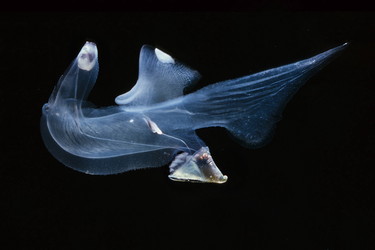
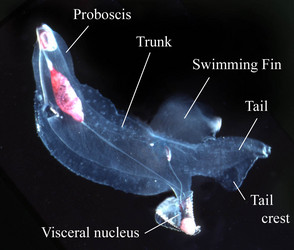
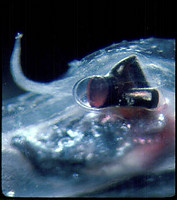
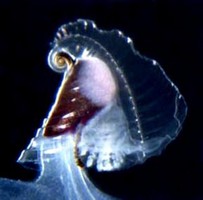
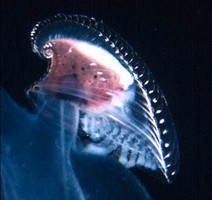
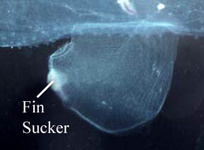



 Go to quick links
Go to quick search
Go to navigation for this section of the ToL site
Go to detailed links for the ToL site
Go to quick links
Go to quick search
Go to navigation for this section of the ToL site
Go to detailed links for the ToL site